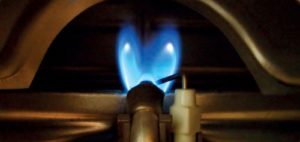If your furnace has a pilot light, that’s kind of like having a pet – something else other than your kids that requires regular, if not constant, monitoring. Not just for the fun of it, mind you, but for the safety of your home and family.
Pilot lights – which have been replaced by electronic ignitions in newer furnaces – serves two useful functions only. First, it lights the burners when heat is called for. After that, your pilot light stays lit to burn off any lingering gas.

What happens if a pilot light suddenly burns out? That leftover gas has to go somewhere, and no doubt it’s headed for your home’s interior. For that reason alone, it behooves to check your furnace at the frequency recommended by your system manufacturer and your home heating service company.
Pilot Light Safety
Here’s one more thing to look out for. The only “healthy” color for a pilot light is blue. But that doesn’t mean it’s the only color it’s capable of producing. So, should you notice the pilot light burning red, yellow, or orange, that means it’s burning to hot and that should prompt an immediate call to Optimum Air.
Let’s say, however, that you check your pilot light at the prescribed intervals, and yet in between, you smell gas. If it’s just a trace, open your windows and doors to let the gas escape and then call us or your gas company. If, on the other hand, the rotten egg odor from gas is overpowering, evacuate your home at once and call 911 from a safe location.
Here’s one more way to ensure the safe operation of your furnace: contact Optimum Air for preventative maintenance if your furnace has not been professionally serviced in a year or more. We’re here to provide for all your home heating and cooling needs while doing everything we can to ensure your ongoing safety.